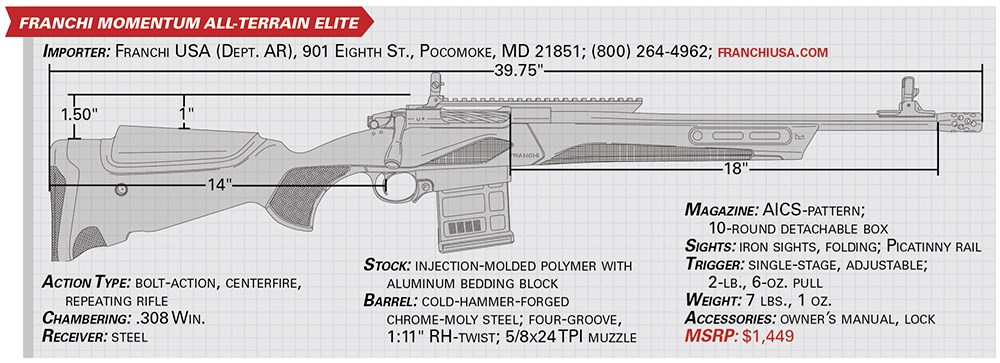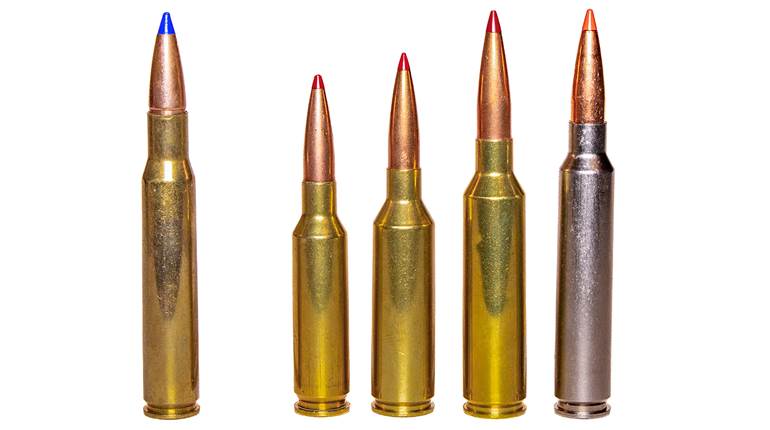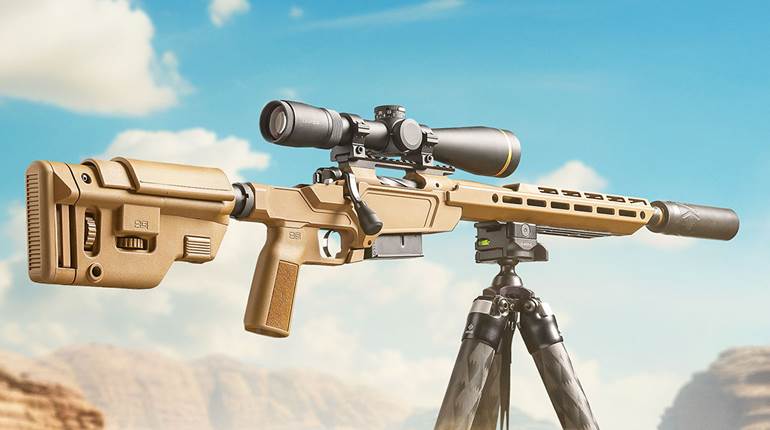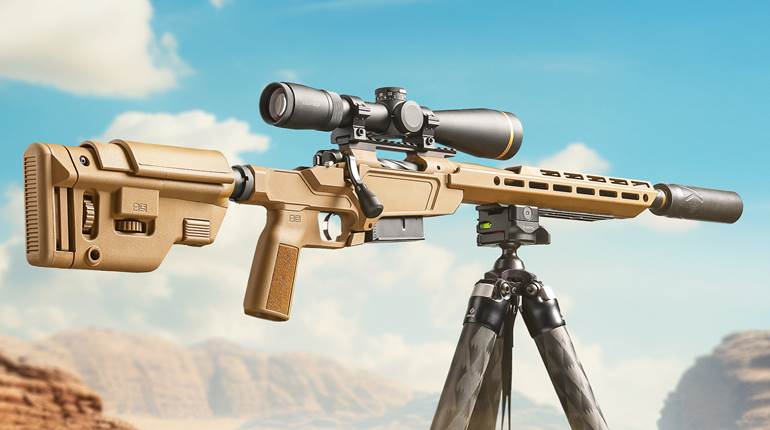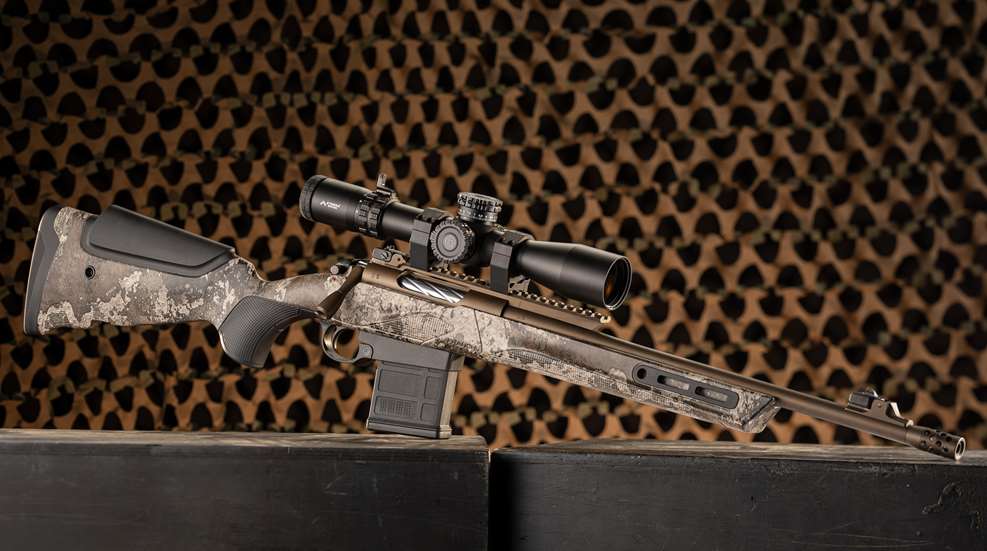
What comes to mind when you hear the term “practical rifle?”
It’s a moniker that I’m sure everyone has a different definition for, depending on what their view of “practical” means. For me, and a growing segment of the shooting world, a practical rifle describes the sport utility vehicle of guns; it’s rugged and capable of almost any task you throw at it. You could use it for backpacking, a hunting companion, as a range plinker or the vaunted “truck gun” that you pull out for those “just-in-case” scenarios.
Randy Cain of Cumberland Tactics teaches an entire three-day course on the so-called practical rifle, so I asked him for his perspective on the topic. Cain views it as an evolution of the famed scout rifle Jeff Cooper advocated. Randy would know, too, as he used to be a rangemaster and staff instructor at Gunsite Academy. He describes the practical rifle as a lightweight, fast-handling bolt-action equipped with iron sights or a low-power variable optic (LPVO). The rifle fires a full-power cartridge suitable for hunting game up to 400 yards and is reliable enough to serve in a defensive role.
Cain prefers a scope mounted over the receiver in a traditional format rather than the forward-mounted style of the scout rifle. From his experience, the forward-mounted scope came with too many compromises, particularly in low light. Desires to feed from the top unobstructed aside, modern optics solved many of the issues that led to a preference for long-eye-relief scopes in the 1980s, so why not embrace them?
To date, there aren’t many factory offerings within the practical-rifle niche. A handful from big companies such as Ruger, Savage and Mossberg are out there; perhaps lesser known are entries from Howa and Tikka. Each one addresses the niche in some way, but all with a different flavor.
With that, let’s take a look at the Franchi Momentum All-Terrain Elite (MATE) rifle, which the Italian manufacturer purpose-built to compete in the practical-rifle niche. Franchi was kind enough to provide a copy of the rifle chambered in .308 Winchester for review.
About Franchi
Franchi, pronounced fraan-kee, began as a family business in Brescia, Italy, back in 1868. The Beretta group acquired the company in 1994 and brought it under the Benelli umbrella. Franchi is most known for its shotguns—in particular, the iconic SPAS-12 model appeared in many action movies and video games through the 1980s to the early 2000s. It was 1993’s “Jurassic Park” where the SPAS-12 first caught my attention as game warden Muldoon’s shotgun of choice.
Franchi launched the Momentum series in 2018 to compete in the affordable hunting-rifle market. It was the company’s first bolt-action centerfire rifle, and the engineers had done their homework on the American market. Out of the gate, it sported a hammer-forged barrel, a three-lug bolt with a 60-degree throw and a chromed-and-fluted bolt body. It came in a selection of the top hunting cartridges, too.
In 2022, Franchi released a new edition dubbed the Momentum Elite. This update included a Cerakoted barreled action, improved stock with a flatter fore-end and camouflage from the factory and proprietary detachable magazines. For SHOT Show 2023, Franchi unveiled the Momentum All-Terrain Elite. Building on the previous year’s Momentum Elite, the All-Terrain moniker elicits a more rugged attitude.
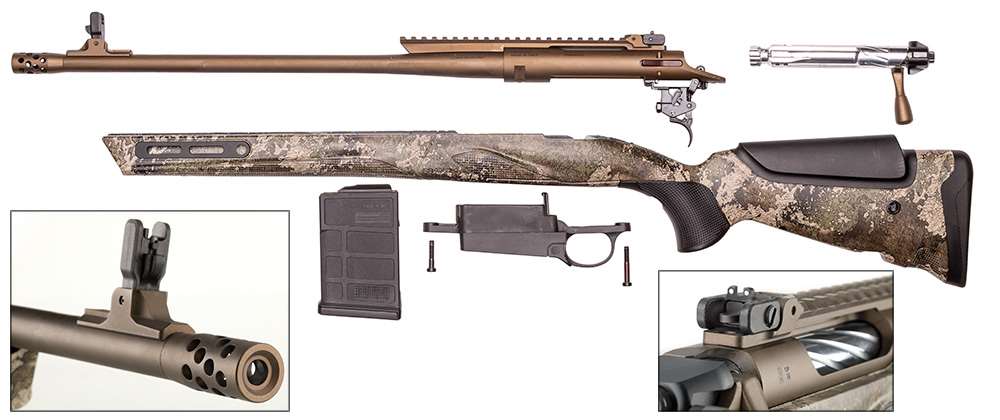
The Momentum All-Terrain Elite
Unlike the other offerings in the Momentum lineup, the All-Terrain Elite comes in only two chamberings: .223 Rem. and .308 Win. Both are common and have suitable loadings for both defensive and hunting purposes.
Regardless of the cartridge choice, the barrel comes in at a shorter 18" long relative to the 22" and 24" options found elsewhere in the lineup. The barrel for the .308 Win. example I tested measures 0.71" thick from forward of the chamber to the muzzle, putting it in light-medium weight territory. It has a 1:11" right-hand twist, making it suitable for most common loadings. Both the action and barrel come Cerakoted in Midnight Bronze. A radial brake, also Cerakoted, adorns the threaded muzzle from the factory.
The bolt is the same chromed-and-fluted three-lug arrangement found in other Momentum rifles. The cast handle, also Cerakoted, is unobtrusive. I was unsure if this low-profile design would slow me down during cycling, but that concern proved unfounded during testing. Like others in the series, the MATE uses a push-feed system, plunger ejector and sliding-plate extractor.
Some of the most interesting changes for this model are in the stock. A TrueTimber STRATA camo pattern covers the polymer stock, save for the recoil pad and palm swell area. The unit maintains the aluminum bedding block arrangement found in previous models, which contributes to consistency and accuracy. For this edition, Franchi made the move to a polymer detachable bottom metal (DBM) system accepting Accuracy International Chassis System (AICS)-pattern magazines; the included 10-round Magpul AICS magazine fits well with little play. The DBM system appears similar to an M5 format, meaning that it does not sit flush with the bottom of the stock but instead extends 0.6" below the stock to help protect the magazine.
An ambidextrous paddle release sits at the rear of the magazine well, in front of the trigger guard; pressing forward on the paddle from either side releases the magazine. I found that this requires a firm push against a spongy spring to actuate, and it’s somewhat difficult to detect exactly when the magazine is free. The magazine does not drop on its own, so removing it requires a combination of both pressing the release and manually stripping the magazine.
The trigger itself is the same Relia Trigger found in other models. Its pull weight is adjustable between 2 and 4 lbs., though Franchi states that adjustment should only be made by a qualified gunsmith or Franchi USA. My sample model averaged a pull of 2 lbs., 6 ozs., for 10 pulls with a Timney trigger gauge. I found the trigger to be adequate, relatively clean with little take-up and short travel overall.
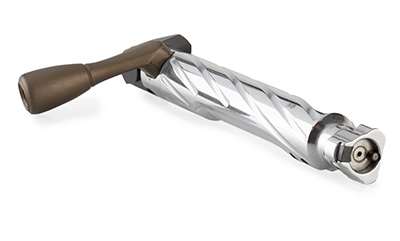
The stock itself maintains the stippled texture along the front, sides and grip areas. The stippling is a light-to-medium texture and not rough on the hands at all. The excellent ergonomics of the previous models are all here; that includes a small textured recess at the rear of the buttstock for the non-shooting hand to tuck into when shooting off a pack. The fore-end is also widened, with a flat bottom ideal for resting on bags or barriers.
In a welcome change, the MATE introduces six quick-detach sling swivel sockets—two each on the left, bottom and right sides of the stock at the front and rear. This provides great flexibility to carry the rifle using common two-point tactical slings and replaces the molded-in eyelets found on previous models. Franchi also added two M-Lok slots each on the bottom, left and right of the fore-end. The bottom slots are most useful for adding a bipod or other accessory, while the slots on the left or right make it convenient to attach a weapon light or laser designator. This is similar to the Mossberg MVP Patrol model, but the M-Lok makes for a lower-profile design than a segment of 1913 rail protruding from the side.
At the rear of the stock, both the cheekpiece and recoil pad are swappable for different comb heights and lengths of pull, respectively. This helps the shooter configure the rifle for the best possible ergonomics depending on the optic selection and body geometry.
In another change, Franchi included an 8.5" (21-slot) 1913 Picatinny rail along the top of the receiver. This allows the shooter to place a conventional-eye-relief scope in the traditional rearward position or use scopes with longer eye relief in a more forward-mounted position. The rail is long enough to accommodate combinations of optics such as red-dots with magnifiers, scopes with clip-on night vision or thermal optics.
Lastly, in true practical-rifle fashion, the All-Terrain Elite comes with iron sights. The front sight sits atop the barrel, behind the muzzle brake, while the rear sight is incorporated into the Picatinny rail. When flipped up, the sights provide a peep configuration for accuracy’s sake. When stowed in the down position, they function like notched three-dot pistol sights for maximum speed. “Clever girl,” indeed. Of course, the sights are not functional when using a magnified optic—but it’s nice to have options.
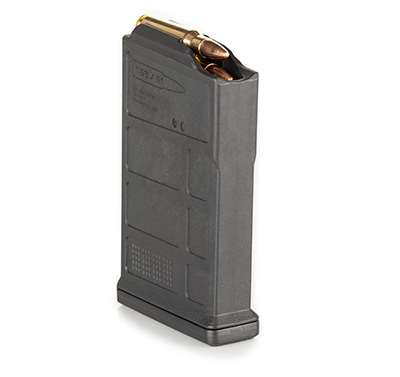
Setting Up A Practical Rifle
While Cain would say that such a rifle would be best served with an LPVO in the 1-4X, 1-6X or even 1-8X range (and this rifle would be well-suited for such optics), I wanted to go a different direction. My vision of a do-all rifle includes not only defensive use at close-to-medium distance, but also target shooting, some competition or observation. I’ve always been a fan of the medium-power variable optic (MPVO) segment, and so opted for a Primary Arms GLx 3-18X 44 mm.
This particular scope is purpose-built for “tactical” and competitive use on rifles following a designated-marksman or special-purpose format. It’s a 34 mm body design with 180 minutes of angle (m.o.a.) travel. It seemed fitting for an SUV of rifles, save for its 29.6-oz. weight, which makes it less suited to hunting.
Something I found during setup was that the extra-long scope rail and rear iron sight posed a mounting issue. On paper, my 1.1" scope rings should be fine for a scope with a 44 mm objective. However, 1.1" proved to be a hair too low; the bell of the objective end touched the scope rail at the front, and the ocular housing at the rear made contact with the rear iron sight “bump” where the rear notch sights sat. I addressed the issue with a set of 1.26" rings. Were I using a scope with a smaller objective end, say 32 mm or less, it might not have been an issue at the front end, but there would still be a concern about the ocular bell touching the rear iron sight unless you positioned the scope just so, which might not be ideal for eye relief.
A practical rifle deserves a practical sling, so rather than a traditional shooter sling, I opted for an adjustable two-point tactical sling I use for my defensive rifles. The Blue Force Gear VCAS has been a loyal companion with training and competition for more than a decade.
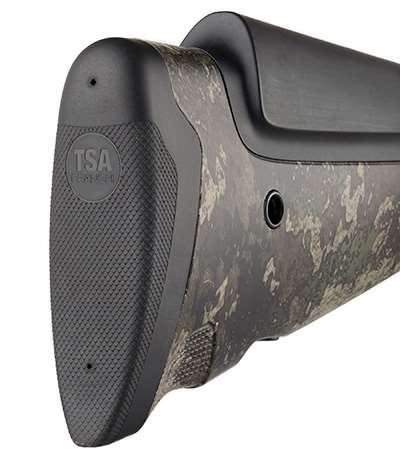
With more of a background in the tactical and competitive side of things than hunting, my first impulse was to try out the MATE through a series of dry-fire drills designed for carbines. Think of your common up drills, ladder drills and positional shooting. After verifying the rifle was clear, I posted a target on the opposite wall of my office and practiced quickly obtaining a sight picture and squeezing the trigger from various positions.
The 40" rifle weighs 7 lbs., 1 oz., empty and without an optic. With the scope, it came in at 9 lbs., 6 ozs., which is about on par with defensive carbines and lighter than similarly equipped battle rifles. Of course, weight could be shaved with a lighter optic, but that’s a matter of personal preference and intended use.
I found the rifle to handle well during all of the drills. The balance point sits about 0.5" in front of the magazine well and provides a lively feel in the hand. Given the full-size scope and required mounting height, I would have benefited from a taller cheekpiece, but one was not included in my sample to try.
During cycling, I found that the bolt handle has more of a sharp “bump” to it rather than a smooth rotation. I attribute this to the short throw and steep cocking ramp. I didn’t quite know what to make of it at first, but after several sessions of practice, I think it gives a positive tactical indication for where you are in the bolt cycle.
On The Range
I brought the rifle out to Peacemaker National Training Center in Gerrardstown, W.Va., for live-fire testing. The facility has myriad ranges and bays for performing almost any kind of shooting you’d like. I also brought along a Caldwell Hydrosled, MagnetoSpeed Sporter and three loads of .308 Win. ammunition: Federal’s 175-grain Terminal Ascent, Hornady’s 150-grain Outfitter CX and Nosler’s 150-grain Ballistic Tip.
I began testing at the southeast-facing 100-yard range with the standard velocity and accuracy-testing protocols: including 10 shots from each loading over the chronograph to provide velocity numbers. For accuracy, I fired five, five-shot groups with each load. The temperature was a steady 63º Fahrenheit, with 24 percent relative humidity and a southerly 5 m.p.h. breeze.
The best and most consistent performer was the Federal Terminal Ascent, which produced the tightest groups of the day. The worst performing was the Hornady Outfitter, which did not perform any better than 2.5". From time to time, you hear of a particular rifle and load not getting along, and this was one of those circumstances.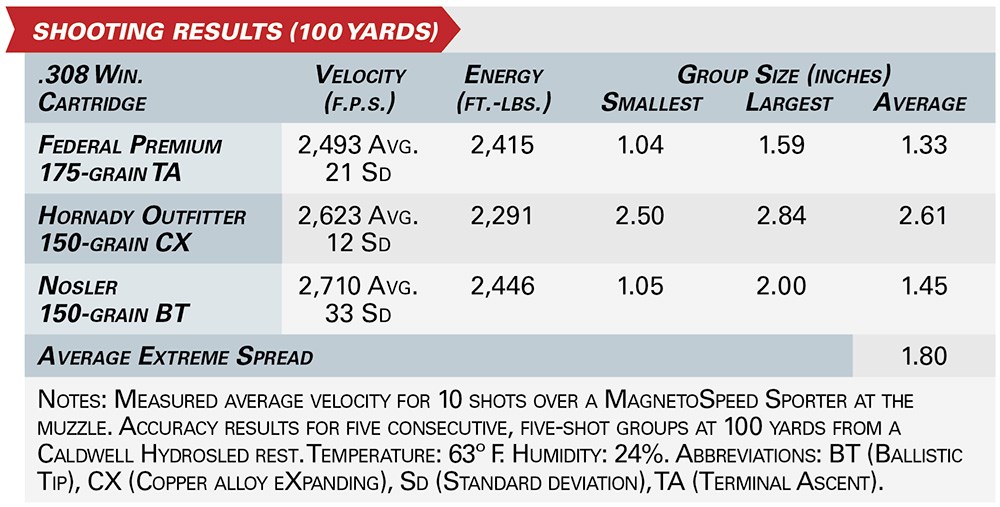
Formal testing completed, I fired the Momentum All-Terrain rifle on steel out to 300 yards with some of the remaining ammunition. It reliably rang steel gongs without any fuss. All through testing of about 200 rounds, I observed no malfunctions in feeding or ejecting of any kind.
I had concerns that the radial muzzle brake would produce excess blast out of an 18" barrel, but it turned out to be quite reasonable. The brake helped soften the recoil of the .308 Win., to boot. I would prefer a muzzle brake that did not have ports along the bottom, but the fact that the brake is easily replaced with any .30-cal. option threaded 5/8x24 TPI is a bonus.
Final Thoughts
I’m glad to see Franchi continuing development of the Momentum rifle line and bringing out new variations. Moreover, the move to the practical-rifle format is interesting. The company has brought a compelling product to the table that competes well against more established models for large brands. The Momentum All-Terrain Elite offers enough well-thought-out features at a reasonable price point that there’s a great chance that Franchi has a hit on its hands for those willing to venture off the beaten path.